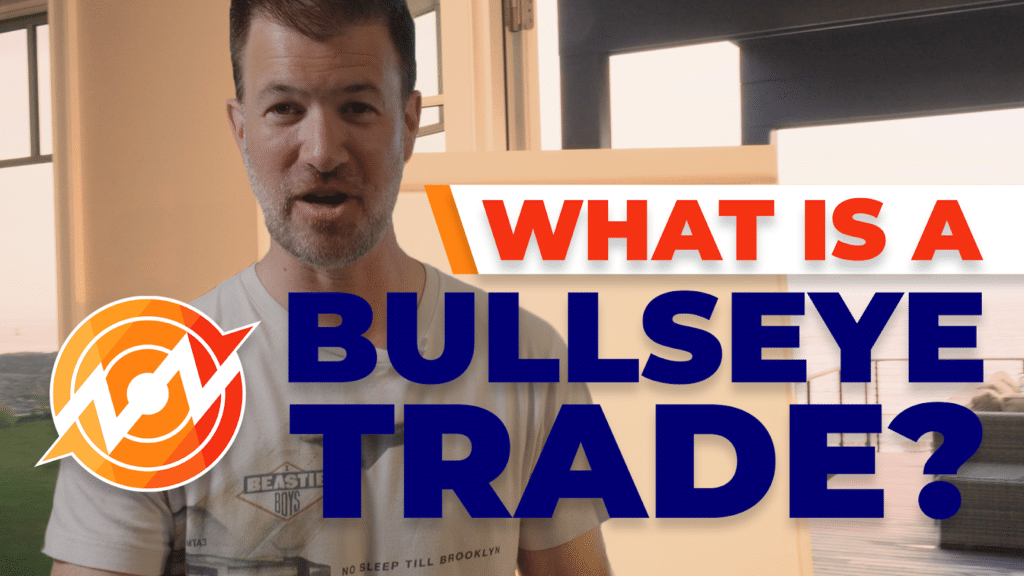Markets always correct, and those who play it right can reap enormous rewards.
It’s not a question of IF but a question of WHEN.
In a recent podcast interview, I explained why markets are set to drop no matter who wins.
Now, I want to share how I plan to not just survive but thrive when it happens.

I promise not to let you get run over!
You should be well versed in all the tools at your disposal.
That means catching up on the option basics.
Learning the top 5 mistakes to avoid.
Preparing yourself for the battle ahead.
That starts with a trading plan that’s ready when you need it.
Start by identifying the potential signs.
Then develop scenario-based solutions.
Here’s what one might look like. Feel free to use it as your blueprint.
Identifying the decline
No magic indicator will give you a reversal signal with 100% accuracy.
However, you can find some clues if you know where to look.
For starters, I like to look at the VIX and the VVIX.
VIX is a measure for implied volatility on the S&P 500. Or better said, it’s the demand for options on the S&P 500 (which are usually puts).
The VVIX is the measure for option demand on the VIX itself.
Spikes in one or both of these can precede market declines or even confirm them.
You see, what really gets markets moving to the downside is fear like a bunch of scared cattle.
Take a look at how the VIX made a clear breakout when stocks started their epic slide back in March.

VIX Daily Chart
When I saw the VIX gap up by such a large amount, I suspected that the decline we saw was about to get a whole lot worse.
Generally, I prefer to get confirmation from a few places before I jump on the bear bandwagon.
I don’t need to be the first one short the market – just catch enough action to make it worth my while.
Creating a schematic
So now that you think a decline is underway, what do you do about it?
One of two things
- Trade my normal setup on the hourly chart
- Or move to a small timeframe looking for a similar setup.
Here’s how each applies.
My favorite setup uses the money-pattern – a 13-period moving average crossing over the 30-period moving average on the hourly chart.
If I get my ideal scenario, price retraces back into the moving averages. Then I could get short the market with put options. My stop out would be a close back above the moving averages.
This deals with two possible outcomes: a complete reversal higher or a retracement higher.
In the first case, I stop out and I’m done. With the second, it fits my setup and I get a nice payday.
Now what if stocks start their decline and keep falling?
That’s where the second strategy comes in.
I would look to smaller timeframes for a retracement setup while also reducing my size.
That way I’m keeping with the same general chart patterns, just shrinking them down. If stocks slide hard, then even a small position will pay out nicely.
Controlling FOMO
Understand that when markets start to move, it can really mess with your emotions.
You might feel like you’re missing out on huge profits.
I’m here to tell you something – sometimes the best trade is none at all.
If you’re not comfortable reducing your size or allowing your trade the latitude to work, then step back.
Wait for a setup that suits your needs.
Whatever your trading style or setup, you should be able to have a specific entry, target, stop, and expectation of risk (loss).
This creates a mechanical approach to trading, driving out many of the emotions by leaning on a well-defined plan.
What a well-defined trading plan looks like
Each week, my Bullseye Trade delivers my full plan for my best trade idea of the week before the market opens on Monday.
I send this out specifically to help traders learn what I do when I take a trade.
I want them to know what I look at, why I like the trade, which contracts I want, where’s my entry, where’s my exit…
…everything that a comprehensive trading plan needs to have.
If any of these are missing from your trades, then you may not be playing with a full deck.
Come see how powerful one well-thought-out, strategically planned trade can do.

